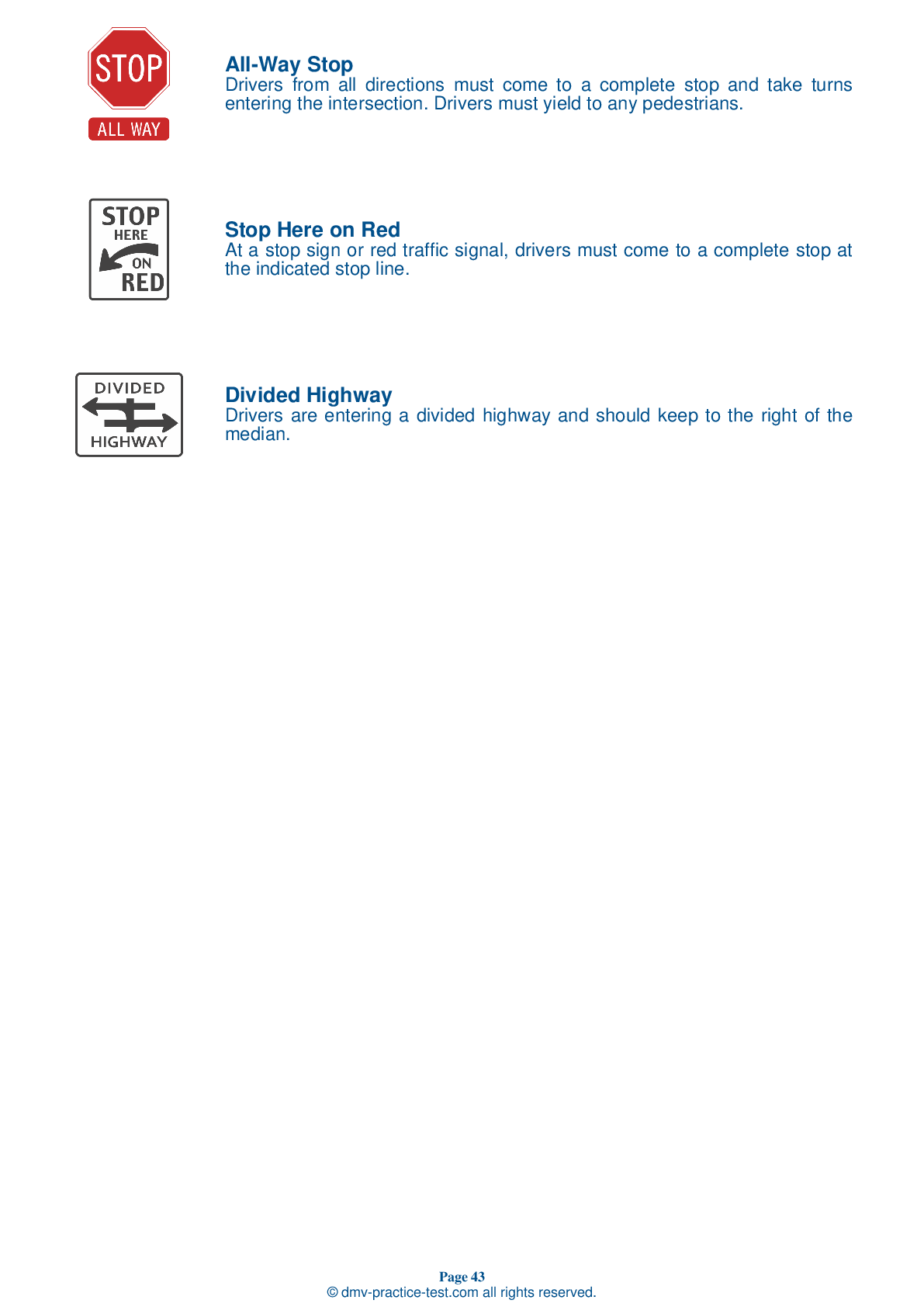FREE Connecticut DMV Practice Test #18 Page 3 of 3
This set of Connecticut DMV practise tests was just updated for January 2025. It includes questions based on the Connecticut Driver Handbook's most essential traffic signs and regulations for 2025. Use actual questions that are very similar (often identical!) to the DMV driving permit test and driver's licence exam to study for the DMV driving permit test and driver's licence exam.
Each practise test question has a hint and explanation to assist you in remembering the concepts. The written component of the official DMV test will include questions about road rules, traffic signs, and driving statutes, as well as information from the Driver Handbook.
To achieve the required passing grade, you must correctly answer 20 of the 25 questions. Take our DMV practise exam to help you prepare for your Connecticut instruction permit or driver's licence.
The DMV exam is available in several languages.
Using any form of testing help will result in an automatic fail, and the DMV may take further action against your driver's licence, so avoid it.
17 . When a bicyclist is making a left turn:
You should expect to see bicyclists driving with traffic on the road. You should not be surprised to see a bicyclist using the left lane when turning.
18 . This road sign means:

Warning signs are usually yellow with black markings. This sign indicates that there could be traffic merging from the right, so drivers should prepare to allow traffic to safely merge.
19 . When you approach an octagonal sign, you must:

An octagonal (eight-sided) sign always means "Stop." Come to a complete stop, yield to traffic and pedestrians that have the right-of-way, and proceed when the way is clear.
20 . This road sign means:

Warning signs are usually yellow with black markings. This sign warns the driver that there is an upcoming winding road. Speed should be adjusted appropriately.
21 . You may not park within how many feet of a fire hydrant?
There are many areas where you cannot park. Do not park within 10 feet of a fire hydrant at any time.
22 . If you drive too fast on a wet road, there is a danger that:
When the road is wet, most tires have good traction when being driven at speeds of up to about 35 mph. As you drive faster, your tires may start to ride up on the water like water skis. This is called "hydroplaning.”
23 . You are driving on a one-way street. You may only turn left onto another one-way street if:
You may turn left onto a one-way street that moves to the left if there is no sign prohibiting the turn. You may not turn left onto a one-way street where traffic moves to the right.
24 . This sign shows one type of:
.png)
Warning signs are usually yellow with black markings. This sign warns that your current road ends at an intersection straight ahead. Slow down and prepare to yield or stop before turning right or left.
25 . Which of these statements is true about large trucks?
Large trucks take longer to stop than other vehicles traveling at the same speed. The average passenger vehicle traveling at 55 mph can stop within 400 feet. However, a large truck traveling at the same speed can take almost 800 feet to stop.
See the exact questions that will be on the 2025 Connecticut DMV exam.
99.2% of people who use the cheat sheet pass the FIRST TIME
LT gives us an insight on how the cheat sheet provided her with all the study questions she needed before taking her test.
Joe initially studied with the handbook and failed his test, he eventually found us online, studied and pass his test the first time around.



